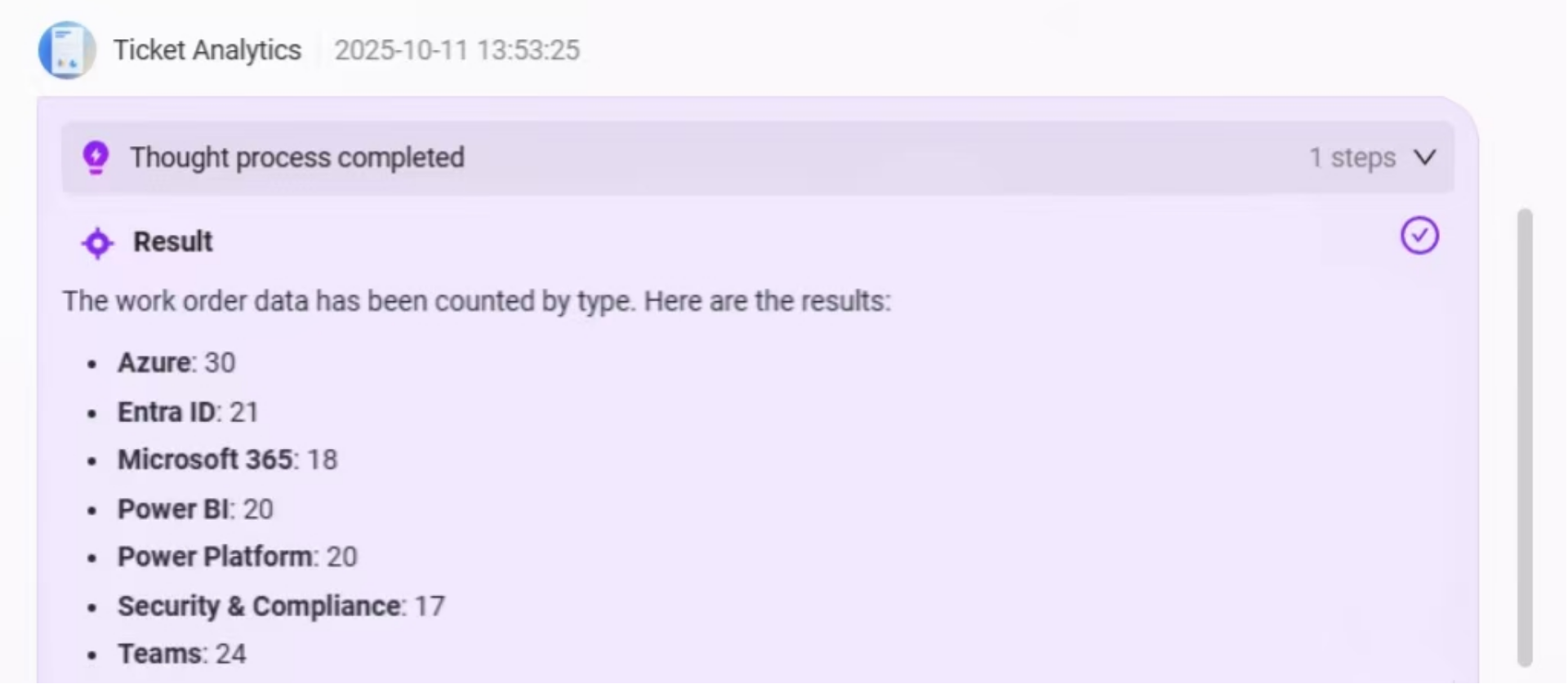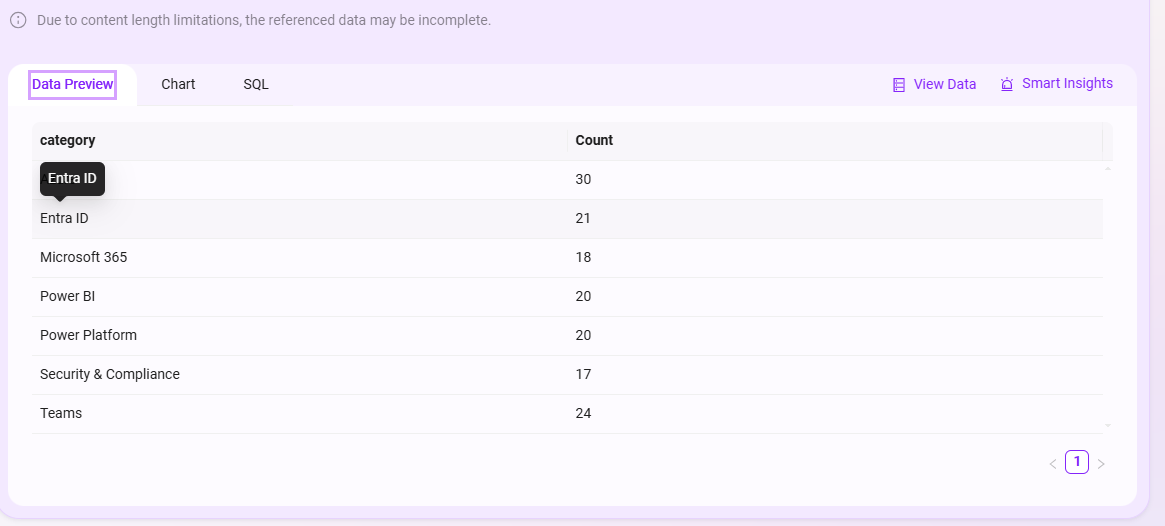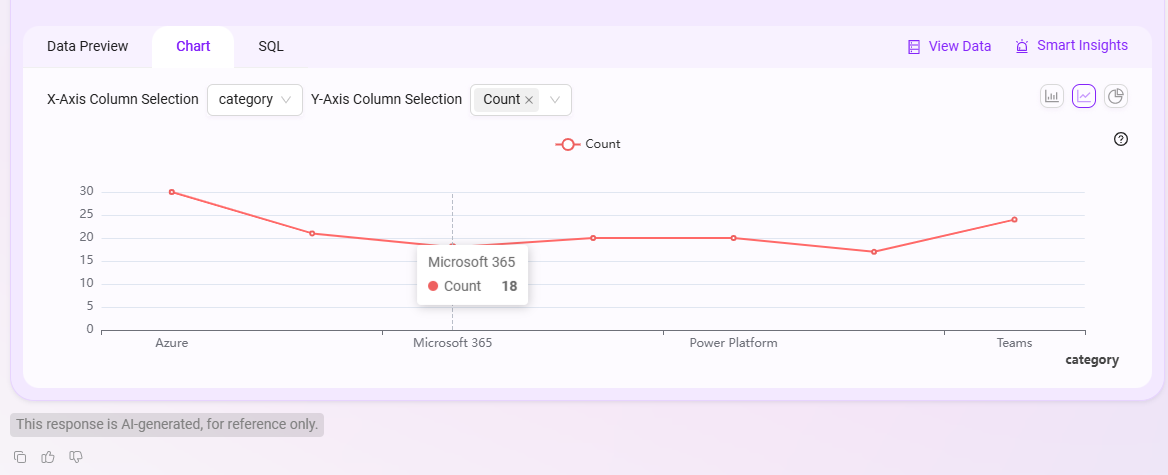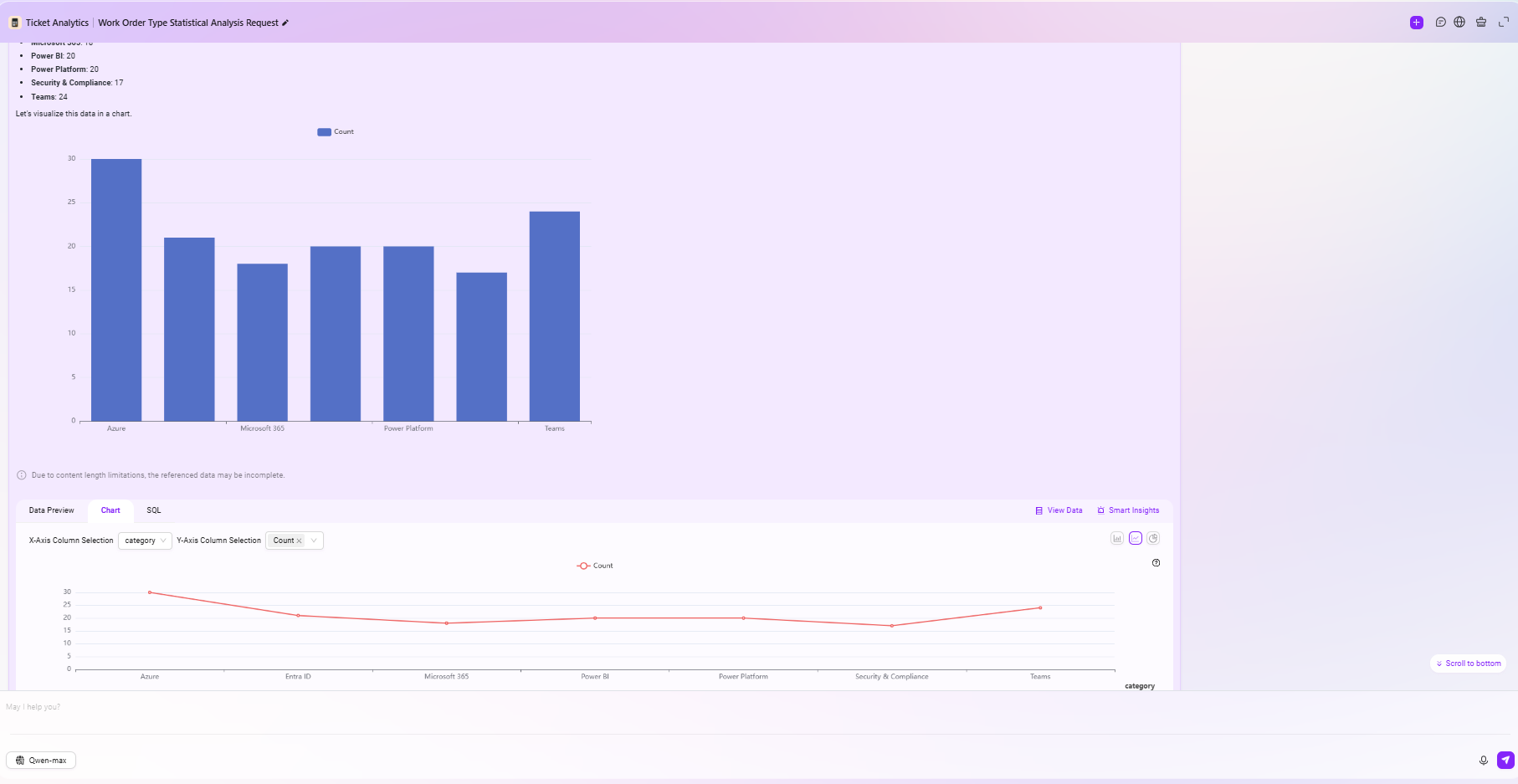Data-Based Agent
After completing the configuration of data sources, data catalog, and business domains in the Data Assets module, you can apply these data to Agents to enable data-driven intelligent Q&A or business automation capabilities.
Such Agents are referred to as Data-Based Agents (Data Agent). They can directly access tables and views within business domains, enabling more accurate and evidence-based responses or operations.
Configuring Data Sources in Basic Agent
- Go to the Basic Agent Configuration Page;
- Locate the "Data Source" section and click the "+" button on the right;
- Select the data source to add from the pop-up list (corresponding to the previously configured business domain);
- Click Confirm and save the Agent configuration;
- Publish the Agent.
Once completed, the Agent can call tables or views from the data source in real time during Q&A, enabling queries and responses based on actual business data.

Configuring Data Source Nodes in Advanced Orchestration Agent
- Open the Advanced Orchestration Assistant page;
- Click "Add Node" and select Data Source Node as the node type;
- Select the corresponding data source (i.e., business domain) from the list;
- Place the node at the appropriate position in the workflow and connect it with other logic nodes (such as condition judgment, API calls, knowledge Q&A, etc.);
- Save and publish the workflow.
After publishing, the Agent will automatically call the configured data source node according to the orchestration logic, introducing real-time data into Q&A or business decision-making.

Notes and Best Practices
-
Keep Business Domain and Data Synchronization Consistent
If the table structure or fields in the business domain are updated, you need to resynchronize in Data Assets; otherwise, the Agent may encounter missing fields or query errors when calling. -
Data Source Permission Control
Ensure that the data source bound to the Agent has access authorization to avoid insufficient query permissions or connection failures. -
Use Data Nodes Appropriately
In advanced orchestration, data nodes should be placed according to business logic. Avoid repeatedly calling the same data in a single session to improve response speed and performance.
Data-Based Agent Q&A Effect
After configuring the data source, you can enter the Agent conversation interface to test the effect of the Work Order Analysis Assistant. Below is an example interaction flow:
-
Enter a natural language request in the chat box
Help me count all work order data by work order type and generate a statistical chart
As shown below:

- The Agent will first extract all work order data from the data source and perform classification and aggregation based on the
categoryfield, outputting the count statistics for each work order type;

- Then, the system will automatically generate a bar chart based on the statistical data, visually displaying the comparison of the number of each type of work order to help users quickly identify high-frequency issue types;

- Below the chart, the system will also provide an Intelligent BI Analysis Area supporting the following operations:
- Data Preview: View the raw data used to generate the chart;
- Chart Editing: Switch the bar chart to line chart, pie chart, etc., or customize the X-axis and Y-axis fields;
- SQL Query Viewing: View and copy the SQL query statement behind the current analysis for further analysis or reuse;
- View Data: Click to jump to the original data table view;
- Intelligent Insights: Click to let the system provide automated insights based on the current data, such as trend analysis, anomaly detection, etc.
Data Preview:

Chart Editing:

SQL Viewing:

Overall Q&A Effect:

By configuring business domains into Agents, SERVICEME achieves complete linkage from data assets to intelligent agents, enabling Agents to go beyond knowledge Q&A and perform intelligent queries, analysis, and decision-making based on real enterprise data.